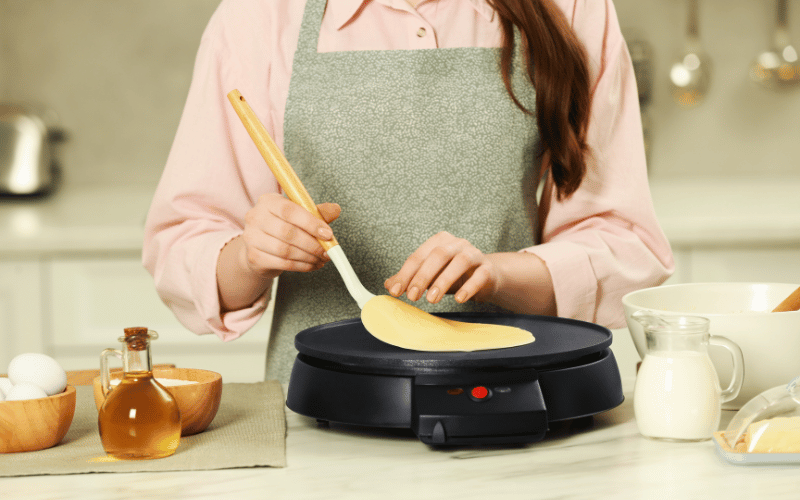In baking, few ingredients hold as much significance as butter. Its rich flavor, creamy texture, and unique ability to enhance the taste and texture of baked goods make it a staple in kitchens around the globe. As bakers, we often face a crucial decision that can impact the outcome of our creations: salted or unsalted butter.
Table of Contents
The choice between salted and unsalted butter is a culinary dilemma that has sparked countless debates among novice and seasoned bakers. While some swear by the savory touch of salted butter, others champion the precision and control that unsalted butter offers in delicate recipes. In this exploration, we’ll delve into the heart of this great debate, weighing the pros and cons of each option to help you make an informed decision in your baking endeavors.
So, let’s embark on a journey into the delectable world of butter and unravel the mystery behind the age-old question: salted or unsalted?
The Case for Salted Butter
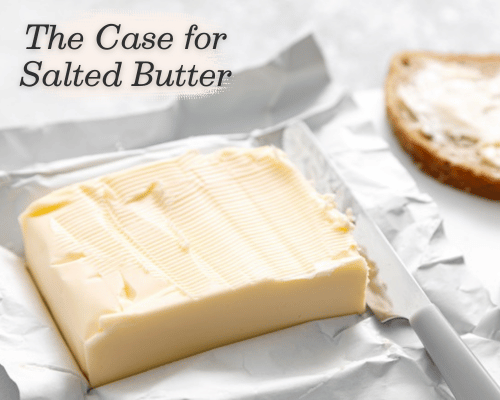
Flavor Enhancement in Certain Baked Goods
Salted butter, with its inherent savory notes, can be a game-changer in certain baked treats. The subtle infusion of salt can enhance the overall flavor profile, particularly in recipes where a hint of saltiness complements the sweetness. Think of classic chocolate chip cookies or salted caramel brownies – salted butter can elevate these indulgent treats to new heights, creating a harmonious balance that tantalizes the taste buds.
Convenience and Versatility for Everyday Use
One of the undeniable advantages of salted butter is its convenience. Its all-purpose nature simplifies the ingredient list for everyday recipes, eliminating the need for additional salt in many instances. This makes it a time-saving choice for those who appreciate a straightforward approach to baking without sacrificing flavor.
Considerations for Adjusting Salt Levels in Recipes
Using salted butter doesn’t mean relinquishing control over the salt content in your baked goods. Bakers can exercise a degree of influence by adjusting the added salt in a recipe to accommodate personal preferences. It’s a delicate balancing act that allows for customization, ensuring that the final result aligns perfectly with individual taste preferences. This adaptability makes salted butter a dynamic ingredient in the hands of a discerning baker.
The Case for Unsalted Butter
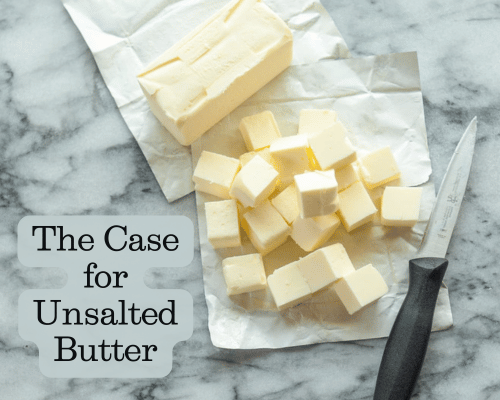
Control Over Salt Content in Recipes
For bakers who value precision and meticulous control over flavor profiles, unsalted butter emerges as the hero. Using unsalted butter provides a blank canvas where the baker has complete authority over the salt levels in a recipe. This level of control is particularly crucial in dishes where the saltiness needs to be fine-tuned to achieve the desired balance, such as in delicate pastries or recipes with subtle flavor nuances.
Precision in Baking for Delicate Pastries
When it comes to crafting delicate pastries, where every ingredient plays a vital role, unsalted butter takes center stage. Its neutral flavor allows the subtleties of other ingredients to shine, making it the preferred choice for recipes like flaky croissants, tender pie crusts, and intricately layered pastries. The absence of added salt ensures that the baker has full command over the flavor profile, achieving a level of precision that is often crucial in the world of pastry.
Adapting to Dietary Restrictions and Preferences
In a world where dietary restrictions and preferences vary widely, unsalted butter becomes a versatile ally. It accommodates individuals who need to monitor their sodium intake or adhere to low-sodium diets. By using unsalted butter, bakers can create delicious treats that cater to a broader audience, ensuring that everyone can indulge in the joy of freshly baked goods without compromising their health or taste preferences.
Different Types of Butter
Butter, a kitchen staple, undergoes a fascinating process from farm to table. Traditionally made from cream, butter is churned to separate the milk solids from the liquid, resulting in the rich, creamy product we know. The key divergence lies in the addition of salt to create salted butter.
The fundamental disparity between salted and unsalted butter lies in their sodium content. Salted butter contains added salt for flavor, while unsalted butter maintains its pure, unadulterated form. This disparity significantly impacts the outcome of baked goods, influencing both taste and texture.
Salted butter labels will explicitly mention the salt content, aiding in precise recipe adjustments. For those seeking complete control over salt levels, unsalted butter is the preferred choice. Selecting the right type of butter is an art, balancing flavor preferences, recipe requirements, and the desire for culinary precision.
Baking Tips for Salted Butter
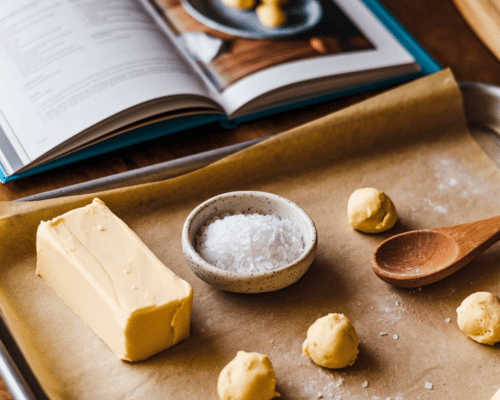
Recipes Where Salted Butter Shines
Salted butter adds a distinct flavor dimension to certain recipes, enhancing the overall taste. It excels in classic treats like chocolate chip cookies, where the interplay of sweet and salty elevates the cookie experience. Similarly, in recipes with rich, indulgent flavors, such as butterscotch bars or salted caramel brownies, salted butter contributes a savory depth that complements the sweetness.
Adjusting Salt Levels in Recipes When Using Salted Butter
Maintaining control over salt levels is crucial when utilizing salted butter. To achieve the perfect balance, carefully assess the salt content in the recipe and adjust accordingly. Reduce or omit additional salt based on personal taste preferences and the inherent saltiness of the butter. This ensures that the final product strikes the right harmony without veering into overly salty territory.
Common Pitfalls to Avoid
While salted butter can enhance many recipes, it’s essential to be mindful of potential pitfalls. One common mistake is overlooking the salt content in the recipe, leading to unintentional oversalting. Always double-check the recipe instructions and adjust the added salt accordingly. Additionally, when experimenting with new recipes, start with a conservative amount of salted butter and taste as you go to prevent overpowering the dish.
Baking Tips for Unsalted Butter
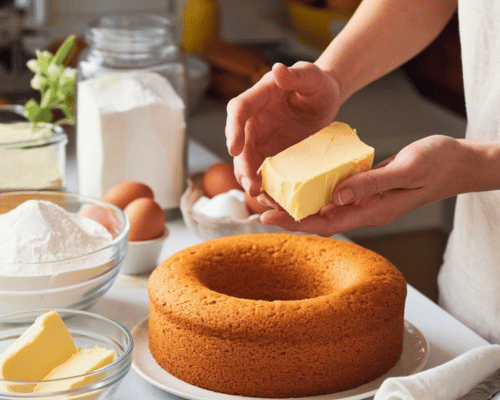
Recipes That Benefit from Unsalted Butter
Unsalted butter, with its neutral flavor canvas, excels in recipes where precise control over salt content is paramount. Delicate pastries like puff pastry or shortbread cookies, where subtlety is key, benefit from the pure, unadulterated taste of unsalted butter. It allows the baker to showcase the nuanced flavors of other ingredients without the influence of added salt.
Managing Salt Levels When Using Unsalted Butter
Maintaining control over salt levels is a meticulous task when opting for unsalted butter. The key is to add salt separately and judiciously, tailoring the amount to suit the specific recipe and personal taste preferences. Experimenting with small increments allows for fine-tuning, ensuring that the final product achieves the desired balance without compromising the delicate flavors that unsalted butter preserves.
Common Challenges and Solutions
Working with unsalted butter presents challenges in terms of achieving the right flavor balance. One common pitfall is underestimating the need for added salt, leading to bland results. To overcome this, taste the batter or dough during the preparation process and gradually add salt until the desired flavor profile is achieved. Additionally, being mindful of the type of salt used – fine or coarse – can impact the distribution of salt in the recipe. By addressing these challenges with careful attention and experimentation, bakers can unlock the full potential of unsalted butter in their creations.
In the buttery saga of salted vs. unsalted, the debate boils down to personal taste and recipe precision. Both options offer unique advantages, from the savory charm of salt to the pristine canvas of unsalted. Embrace experimentation, adjust salt levels to your liking, and revel in the versatile role butter plays in crafting delectable treats. Remember, whether it’s a flaky croissant or a gooey chocolate chip cookie, the choice is yours, and the joy of baking lies in savoring your flavorful masterpiece

Hey There, I’m Monica, Mom of two. This is my personal blog site. Here I write about Kitchen Tips Tricks, Recipes, and Review the products I use.
I hope you enjoy the article. Give me feedback on how I’m doing with my blog. I would appreciate it so much.
Have a great day! 🙂
[Follow me on Twitter]

